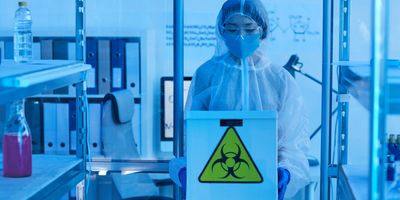Do You Know All the Biosafety Levels?
Most lab professionals know four biosafety levels, but BSL2+ and BSL3+ are also important to know
Look at almost any biosafety reference, source, or article and they all say the same thing, “There are four biological safety levels—BSL1, BSL2, BSL3, and BSL4." But what if your lab needs another level for certain hazardous agents or riskier processes?
Aren’t there just four biosafety levels (BSLs)?
Yes and no. There are four BSLs as we know from many sources—even the Biosafety in Microbiological and Biomedical Laboratories, or BMBL, lists four biosafety labs as BSL1 through BSL4. But sometimes biohazards and our processes don’t fit neatly into a certain level. Sometimes we need an in-between level to manage elevated risks by using enhanced practices.
Why are there two BSL+ levels?
Think of the myriad agents as being on a spectrum with many offshoots. Most can be fit into four risk groups well enough as is. A few of the agents don’t fit well, and sometimes the processes in use increase the risks. So, we need to modify BSL2 and BSL3 for these few times. These vary between BSL labs and organizations with labs. One constant is that there isn’t one consistent list of these. Specific risk assessments are key.
BSL2+
There are three aspects to focus on for BSL2+ risk assessing and risk managing— agents, processes, and enhanced 2+ practices.
2+ agents:
- Viruses + bacteria causing severe or fatal disease with treatment or vaccines
- Some unfixed human cells from blood, etc. with risk of HIV or HBV
- SARS-CoV-2, other viral vectors, arboviruses, and emerging pathogens
- Oncogenes in retroviral or lentiviral vectors
- Drug-resistant risk group 2 (such as MRSA), higher concentrations, greater volumes (e.g., 10+ liters)
Processes with added risks:
- Practices with a greater probability or exposure of airborne route of entry
- Higher volumes or concentrations of culture
- Procedures deliberately generating aerosols
- High-speed cell sorter
- High pressure (e.g., 30-60 psi or greater)
- Potential for aerosolization
Enhanced 2+ practices:
- All of BSL2 applies
- Plus using some BSL3 practices, such as:
- Specialized training on the risks and how to mitigate them
- The use of wrap-back disposable gowns and wearing double gloves
- Respiratory protection when handling material outside a biosafety cabinet
- Restricting access to rooms when experiments are conducted
- Lockable doors
Now, let’s look at when a BSL3+ lab might be needed. They’re rare and this may be your first time learning about them.
BSL3+
BSL3+ labs are far less commonly done. Because of their rare use, it’s hard to find helpful information about them. The same three aspects require our attention—agents, processes, and enhanced 3+ practices.
3+ agents:
- Highly Pathogenic Avian Influenza
- 1918 Pandemic Influenza
- Ebola (in the 1970s in Gabon)
Processes with added risks:
- Using higher than normal volumes of culture
- Higher concentrations of culture
- Production of aerosols
Enhanced 3+ practices:
- All of BSL3 applies
- Plus using some BSL4 practices, such as:
- Greater decontamination facilities
- Showers (entering and exiting), double containment
- Negative pressure and glove box
- Other BSL4 controls as specified for the agent and processes
How to decide if your lab needs to use a BSL2+ or BSL3+
It’s all about risk. If your lab has pathogens or agents in a BSL2 or BSL3 lab with processes that increase risks, you may need to implement a +level approach. Assess your lab and process-specific risks, then decide based on the risk analysis. Good luck!
Embark on an educational journey in lab safety with the Lab Safety Management Certificate program from Lab Manager Academy. We understand that navigating protocols and best practices for the various biosafety levels can be complex, and we're here to support you every step of the way. Our program empowers you to foster an effective safety culture, mitigate risks, and become a lab safety leader. Discover more about the Lab Safety Management Certificate program here.


